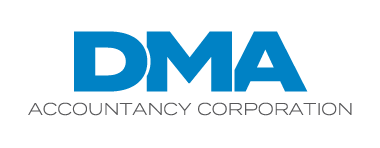Managing workers’ compensation and unemployment insurance costs is crucial for manufacturers to maintain financial stability. Indeed, without plans in place to keep these two labor-related costs corralled, they can quickly become detrimental to your bottom line.
Focus on safety to save on workers’ comp
Most states require employers to maintain workers’ comp insurance. Many manufacturing employees perform duties that can make them susceptible to injury or illness, so workers’ comp can be a significant expense. To help keep workers’ comp costs to a minimum, consider:
Checking employees’ classification codes. Insurers use these codes to set premiums, so it’s critical to properly classify your employees. For example, if clerical workers are mistakenly classified as shop floor workers, your premiums may be unnecessarily high.
Confirming your experience modification rate. Insurers also use this rate — which represents your company’s loss history relative to industry averages — to calculate your premiums. A higher rate means higher premiums, while a lower rate means lower premiums. Make sure your insurer used accurate data to calculate this rate correctly.
Implementing a comprehensive safety program. When it comes to minimizing workers’ comp costs, nothing is more effective for preventing accidents, injuries and illnesses than a robust safety program. Your program should ensure that machinery and equipment are well maintained, appropriate safety equipment and protocols are used, and employees are properly trained.
Conducting regular safety audits. Monitor your safety program’s performance with regular audits. Implement changes, if necessary, to eliminate potential hazards and reduce workplace incidents.
Making safety part of your culture. Integrate safety standards into your company’s culture. Set the right tone at the top and communicate the importance of safety to all employees. Encourage employees to promptly report accidents, injuries or illnesses. If they feel pressure to conceal incidents or work through the pain, untreated injuries or illnesses can worsen and your workers’ comp costs will likely increase.
Implementing a return-to-work program. The longer injured workers are away from their jobs, the greater their claims for lost wages and the lower the chances they’ll return. A return-to-work program can help you retain employees and manage workers’ comp costs by getting injured or ill workers back to work. Ease workers back into the workplace with light duties and rehabilitation, perhaps on a part-time basis. Often, workers’ comp insurance will make up the difference, if any, between workers’ normal wages and their wages during the rehab period.
Lower your experience rating to reduce unemployment taxes
Unemployment insurance is funded by federal and state payroll taxes and administered by the states. State unemployment tax rates vary from state to state, as do the wage bases on which those taxes are imposed.
Typically, state tax rates for established businesses are also affected by the business’s experience rating. This rating is based on the number of former employees collecting unemployment benefits and other factors. Strategies for lowering your experience rating and, therefore, your unemployment taxes include:
Hiring conservatively. Unemployment benefits are generally available to employees who’re terminated through no fault of their own — as opposed to those who quit or are fired for cause. (Keep in mind that the termination reasons that are considered “for cause” vary by state. For example, in many states, employees fired for poor performance — as opposed to, say, gross misconduct — are eligible for unemployment benefits.) Avoiding over-hiring can minimize terminations and unemployment claims.
Using independent contractors or temporary workers. Contractors aren’t employees, so they’re not eligible for unemployment benefits. Temporary or seasonal workers may or may not be eligible to file unemployment claims, depending on state law. Consider hiring temps through a professional employer organization (PEO). Generally, the PEO is the employer for tax purposes and is responsible for paying unemployment taxes.
Helping employees succeed. To minimize terminations, screen prospective employees carefully to ensure they have the requisite job skills. Also, provide them with the tools and training to succeed.
Opposing illegitimate claims. Contest claims if you can show that the employee quit, was fired for cause (again, what constitutes “for cause” depends on the state) or is otherwise ineligible.
Offering severance pay and outplacement benefits. The former may delay the start of unemployment benefits, while the latter may reduce their duration.
Form your plan
It’s no secret that labor costs are a significant expense for most manufacturers. Taking the proper steps today to keep workers’ compensation and unemployment insurance costs low can lead to greater profitability down the line.
© 2024


Recent Comments